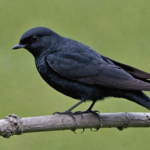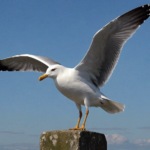The Barn Owl: The Ghostly Guardian of the Night
The barn owl, also known as the “ghostly guardian of the night,” is a fascinating creature that has captured the imaginations of many. With its distinctive appearance and mysterious behavior, this nocturnal predator has become a symbol of folklore and legend.
Appearance and Behavior
The barn owl can easily be recognized by its unique features. It has a heart-shaped, white and silver facial mask that contrasts with its dark eyes and yellow beak. Its body is covered in gray-brown feathers with fine gray and brown markings, while its breast is whitish to reddish-white with dark brown speckles. The barn owl’s long legs are covered in white feathers and end with powerful talons. Its wings are long and narrow, allowing for silent flight.
Speaking of silent flight, the barn owl is one of the quietest birds in the world. Its wings are equipped with a soft and fluffy fringe that helps to reduce noise by modifying the airflow. This adaptation allows the barn owl to hunt without alerting its prey.
The barn owl is known for its various vocalizations. From soft, high-pitched screeches to eerie hisses and chattering sounds, these calls add to its mystique and have inspired many ghostly tales. Interestingly, the barn owl’s vocalizations have often been associated with the sounds of human sighs or snores, further contributing to its enigmatic reputation.
Habitat and Distribution
The barn owl is a widespread species found on almost every continent. It can be observed in Europe, Africa, Asia, North and South America, Australia, and some Pacific islands. With different sub-species sharing this expansive territory, the barn owl has adapted to a variety of environments.
Preferring open spaces, the barn owl can be found in areas such as meadows, field edges, hedges, and orchards. It is often associated with human structures and can be found in barns, abandoned buildings, church steeples, and even city parks. During the day, the barn owl remains hidden, waiting for nightfall to emerge and hunt.
Diet and Ecological Importance
The barn owl is a voracious predator, primarily feeding on small rodents such as voles, mice, and shrews. Its exceptional hearing allows it to locate prey accurately, regardless of darkness or thick vegetation. In addition to rodents, barn owls also consume small birds, bats, large insects, amphibians, and occasionally rabbits. A single barn owl can consume three to four prey items each night.
This dietary preference for rodents makes the barn owl beneficial for agriculture and gardens. By controlling populations of pests like mice and voles, barn owls contribute to ecosystem balance and reduce crop damage. Their presence can help minimize the need for chemical pesticides, promoting a more sustainable approach to pest control.
Conservation Status
Despite their importance in pest management, barn owl populations have been declining in recent years. They face multiple threats, including habitat loss through the destruction and renovation of buildings, collisions with vehicles, changes in the landscape, and the use of pesticides.
In many countries, barn owls are protected by law. It is illegal to harm, capture, disturb, or destroy their nests or eggs. Steps are being taken to conserve their habitats and raise awareness about the importance of these birds in maintaining ecological balance.
In Conclusion
The barn owl, with its captivating appearance and enigmatic behavior, truly lives up to its reputation as the “ghostly guardian of the night.” As a nocturnal predator and expert rodent hunter, the barn owl plays a crucial role in balancing ecosystems and benefitting gardens and agriculture. By appreciating and protecting these magnificent birds, we can ensure their continued existence and contribution to the natural world.



